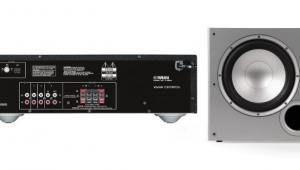Which Will Lead to Better Sound: Upgrading My Power Amp or Treating Room Acoustics?

Q I’m wondering which upgrade will make a more significant audible difference in my home theater: upgrading the power amplifier or treating room acoustics? My room measures 17 x 16 x 8.5 feet and has tile floors that are covered by a large rug. I have a 7.2.4 setup powered by an Anthem MRX 1140 AV receiver. For speakers, I use Paradigm 80F towers and a 70LCR for the front channels, Monitor Audio Bronze 2 and FX speakers for the surround and Atmos channels, and a pair of Paradigm Defiance X series subwoofers.
Would adding an Anthem MCA 525 Gen 2 power amp or investing in room treatments like corner bass traps and back-wall acoustic panels offer a more audibly noticeable upgrade? I find that 5-channel audio recordings sound even and are immersive, but many Atmos-mixed tracks don’t feel as balanced. I’m not sure if this is due to the quality of the recordings or if I need greater amplification when more channels are engaged.” — Michael (last name withheld)
A Ah, the age-old audio debate: hardware versus environment. Both are critical factors in sound quality, but they play different roles. If 5-channel recordings are immersive but Atmos tracks tend to sound less even, it’s a sign that room acoustics might be at play — specifically, how sound is reflected and being absorbed in your room.
Unless your amplifiers are clipping, which can create a ragged form of distortion, there’s no real benefit to adding more power. As long as your AVR — which is undoubtedly a high fidelity piece of gear — is adequately driving your speakers, you will experience only marginal improvements.
On the other hand, the room it is likely to present acoustic challenges such as bass build-up in the corners and reflections off the walls and floor, even if that tile floor is only partially covered by an area rug. All of which leads me to believe you will probably get a more significant and audible upgrade by investing in room treatment. Adding corner bass traps and back-wall acoustic panels, for example, could improve imaging and reduce coloration, which in turn would have the effect of making things sound more natural. When done right, room treatment can solve problems that no amount of equipment upgrading can fix.
“Fixing” room acoustics can be tricky, though, and treating a listening space in a way that actually improves the sound can get complicated. As a first step, you might want to reconsider the location of your Atmos speakers and fiddle with system calibration to see if you can get a more natural sense of envelopment.
Now, having said all that, there are potential benefits to adding an amp to an AV receiver setup where all-channels-driven power is invariably lower (due to power-supply limitations) than when only two channels are driven. With an external amp in the mix, the AVR will be able to feed more power to the (fewer) channels it is driving. In other words, adding an external amp effectively makes the AVR more powerful. And hey, if your budget allows, doing both wouldn’t hurt!
Click here for more expert advice on all things audio and video.




























































